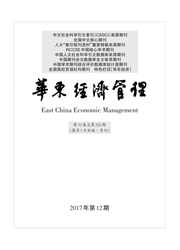

 中文摘要:
中文摘要:
与传统文献将风险下降比率作为风险对冲效率指标不同,本文引入期望效用理论来比较最小方差对冲策略、最小在险价值(VaR)对冲策略和最小条件在险价值(CVaR)对冲策略的对冲效率,从而将人们的风险态度同对冲策略选择联系起来,以实现不同风险态度的投资者选择不同风险对冲策略的目的。借用风险中性效用函数、二次效用函数和CARA效用函数,本文严格证明:在这三种对冲策略中,最小方差对冲策略过于保守,最小VaR对冲策略最为激进,风险厌恶程度大的投资者偏好最小方差对冲策略,风险中性投资者和风险厌恶程度小的投资者更偏好最小VaR对冲策略,最小CVaR对冲策略介于二者之间。
 英文摘要:
英文摘要:
There are two distinct research frameworks for hedging issues all the time:risk-minimizing models and utility-maximizing models.Risk-minimizing models implicitly assume that people are fully risk averters who only are concerned about the risk and do not care about returns,while utility-maximizing models are constructed to maximize utility functions which include return-risk tradeoff and have to give a weighing parameter for the return and risk usually.There exist certain disadvantages in the two kinds of models above.The former models' shortage is that they doesn't consider the people's subjective risk attitudes(or implying complete risk aversion).The latter models' shortage is that there is not scientific standard to determine the weighing parameter and the utility function setting is very subjective.In addition,the traditional literatures only define risk reducing ratio as the risk hedging efficiency index,but different risk measure indices often induce inconsistent or even contradictory results.Therefore a hedging efficiency index which is independent of risk measure indices is needed.Method:To repair the shortcomings above and absorb the advantages of the two kind of models respectively,firstly hedging strategies based on risk-minimizing models are gotten,then the expected utility theory is applied to compare the hedging efficiency of hedging strategies,so that individual's risk attitude can be linked to hedging strategy choice.The difference with the traditional risk-minimizing model is that we the risk reducing ratio isn't used as hedging efficiency index,while compared with the traditional utilitymaximizing model,our method doesn't need to accurately set the weighing parameter.Data:Two cases are designed to test the theorem above.The data of case 1is generated by simulation method.In case 2,the historical data of CSI 300 stock index and its futures is applied.The data window ranges from May 2010 to September 2014,a total of 53 monthly historical data.The CSI 300 index futures offici
 同期刊论文项目
同期刊论文项目
 同项目期刊论文
同项目期刊论文
 期刊信息
期刊信息
